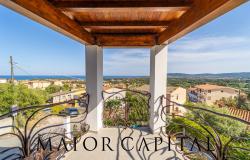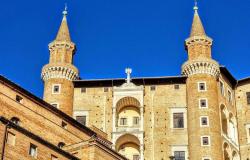Words by Pat Eggleton
In summer you may want to see a little greenery as well as taking time out from indoor museums. Here are five gardens in five different regions for you to visit.
1. Parco del Castello di Miramare, Trieste [Fruili – Venezia Giulia]
 Situated ten kilometres from Trieste, the park comprises the grounds of the nineteenth century Castello di Miramare which was built from 1865-60 for the Austrian Archduke Ferdinand Maximilian. The seashore park was designed by the Archduke himself and occupies 54 acres of land on the Grignano promontory.
Situated ten kilometres from Trieste, the park comprises the grounds of the nineteenth century Castello di Miramare which was built from 1865-60 for the Austrian Archduke Ferdinand Maximilian. The seashore park was designed by the Archduke himself and occupies 54 acres of land on the Grignano promontory.
A dense pine forest protects the park from the wind and all types of plants grow happily there, including exotic species. The Italian terraced garden is not to be missed. This year the park was among the ten finalists in the “Most Beautiful Park in Italy“ competition.
On Sunday 29th August this year a special guided visit for children will take place. Castello di Miramare website.
2. Parco Naturale Burcina, Pollone [ Biella, Piemonte]
 This lies on a hill which was transformed into an informal park by the nineteenth century industrialist Giovanni Piacenza. Woods and grassland stretching over 57 hectares are home to many beautiful plant species such as rhododendrons which reach over ten metres in height. It was Giovanni Piacenza’s son, Felice, who created the “rhododendron valley” and collected hybrids of the species.
This lies on a hill which was transformed into an informal park by the nineteenth century industrialist Giovanni Piacenza. Woods and grassland stretching over 57 hectares are home to many beautiful plant species such as rhododendrons which reach over ten metres in height. It was Giovanni Piacenza’s son, Felice, who created the “rhododendron valley” and collected hybrids of the species.
There is also an apple orchard containing over fifty old varieties, a bar-restaurant and a Park headquarters containing exhibits, multimedia educational materials and over one thousand books on environmental and naturalistic issues.
Parco Naturale Burcina website.
3. Giardino Giusti, Verona [Veneto]
 Designed in 1580 by Agostino Giusti, a politician and intellectual, for his villa, this is one of the best-preserved Renaissance gardens in Italy and has all the features we associate with such a garden, such as geometrically laid out flower beds, terraces, fountains, gravel paths, avenues of cypresses, statues, a grotto and a maze. If you climb up to the top belvedere you will have a stunning view of the city of Verona.
Designed in 1580 by Agostino Giusti, a politician and intellectual, for his villa, this is one of the best-preserved Renaissance gardens in Italy and has all the features we associate with such a garden, such as geometrically laid out flower beds, terraces, fountains, gravel paths, avenues of cypresses, statues, a grotto and a maze. If you climb up to the top belvedere you will have a stunning view of the city of Verona.
The garden was visited by Mozart and Goethe and many members of the royal families of Europe. Giardino Giusti website.
4. The Vatican Gardens, Rome
 A tour of the gardens may not be the first activity that comes to mind when you visit the Vatican but it is possible to visit the oasis of greenery behind St Peter’s with an official Vatican tour guide.
A tour of the gardens may not be the first activity that comes to mind when you visit the Vatican but it is possible to visit the oasis of greenery behind St Peter’s with an official Vatican tour guide.
The Vatican Gardens contain plants from all over the world plus winding paths, woodland, topiary, sculptures and fountains. You will also be able to see the Villa Pia, built for Pope Pius 1V in 1560. As you learn the history of the gardens, you will learn more about the lives of the Popes and the history of the Vatican.
The tour lasts for two hours and the first half hour is by bus. You must book in advance and can do so online at the Vatican Museums website. You will receive a voucher which you will be able to exchange for a ticket on the day of the tour. The ticket, which costs 31 euros at the time of writing, is also valid for the Vatican itself and the Sistine Chapel.
Please note that, if you take this tour, you will be expected to dress as if you were entering the Vatican and everyone has to go through security.
The Vatican Gardens website.
5. La Cutura, near Giuggianello [Puglia]
 “Li cuti” means “rocks” in pugliese dialect and “rocky” is an adequate description of the ground on which this botanical garden stands. The garden contains over 2,000 varieties of cacti, the largest collection in Italy.
“Li cuti” means “rocks” in pugliese dialect and “rocky” is an adequate description of the ground on which this botanical garden stands. The garden contains over 2,000 varieties of cacti, the largest collection in Italy.
As you enter you will see an ancient olive tree which was upturned by a tornado. It has been left in this position as a memento. Among the cacti you will see a Mexican one called “desert tank” and another which has “leaves as sharp as knives”.
Signor Salvatore Cezzi works in a large greenhouse which contains five hundred grafts. He enjoys his work on the plants but such grafting experiments are not easy to carry out. The garden stands on the site of an eighteenth century farmhouse and its outbuildings.
Visit the La Cutura website.














